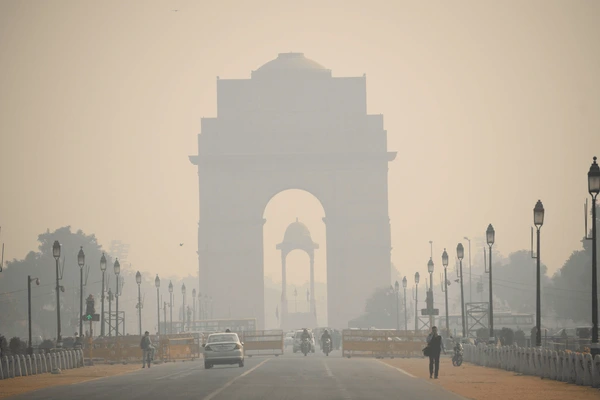Dense fog engulfed Delhi, causing substantial disruptions in air travel at the city’s Indira Gandhi International Airport (IGIA), the busiest and largest airport in India. The fog led to low visibility conditions, affecting flight operations and resulting in delays and diversions.
As of 7 am on the affected day, approximately five flights were diverted due to poor visibility. Among these diversions, three flights were rerouted to Jaipur, one to Ahmedabad, and another to Mumbai. In total, over 200 flights experienced delays, inconveniencing passengers and creating challenges for airlines and airport authorities.
The disruptions primarily impacted flights operated by pilots without CAT-III qualifications. In aviation, Category III, or CAT III, refers to an advanced instrument landing system (ILS) approach that enables aircraft to land in extremely low visibility conditions caused by factors such as fog, rain, or snow. CAT III systems support precision approaches and landings even when runway visibility is as low as 50 feet (15 meters), and the visual range is between 50 and 200 meters.
However, the challenges faced during low visibility conditions are compounded by the limited availability of CAT-III compliant runway capacity at Delhi airport. While the airport boasts three CAT-III compliant runways, the oldest runway, 9/27, lacks this advanced capability.
The operationalization of runway 28/10, which is currently undergoing re-carpeting, has been postponed until mid-February. This delay is pending the completion of findings by the Directorate General of Civil Aviation (DGCA). Meanwhile, runway 29R-11L is CAT-III compliant on one end, and officials anticipate certification for CAT-III landings from both sides by the next month. Consequently, runway 29L-11R currently serves as the main runway for CAT-III flight operations.
The adverse weather conditions on this particular day also included rain, which further added to the complexity of flight operations. The combination of fog and rain often poses challenges for pilots, as they must navigate through reduced visibility and wet runway conditions.
India’s largest airline, IndiGo, issued a warning to passengers about potential travel impacts due to the forecast of adverse weather in Delhi, Srinagar, and Chandigarh. The airline advised passengers to stay informed about their flight status as the situation evolves.
SpiceJet, another prominent Indian carrier, also communicated the potential disruptions caused by poor visibility in several cities, including Delhi, Varanasi, Patna, Ayodhya, Bagdogra, and Darbhanga. Additionally, the airline highlighted the impact of light rain in Dharamshala and snow in Srinagar and Leh. Passengers were urged to monitor their flight status and prepare for potential delays or changes.
The winter season in northern India is often characterized by dense fog, particularly in the early morning hours. Fog-related disruptions are a common occurrence during this period, impacting various modes of transportation, including air travel, road traffic, and railways. These challenges highlight the importance of robust infrastructure and operational procedures, especially at major airports like Delhi, which serve as critical hubs for domestic and international flights.
Airports worldwide employ advanced technologies and operational protocols to mitigate the impact of adverse weather conditions. CAT-III landing systems, in particular, play a crucial role in ensuring that flights can continue to operate safely and efficiently even when visibility is severely restricted.
Despite these challenges related to dense fog, airlines and airports work diligently to manage disruptions and provide timely updates to passengers. Travelers are advised to stay informed about the latest developments, check their flight status regularly, and follow guidelines issued by airlines during adverse weather conditions.











